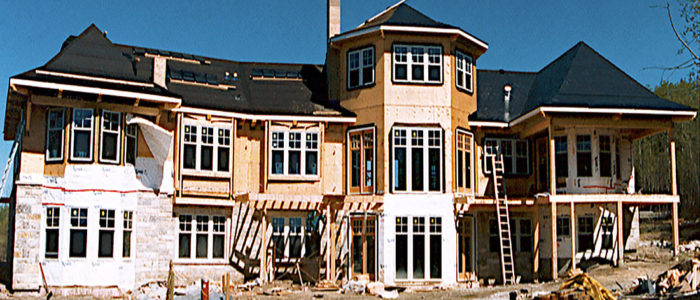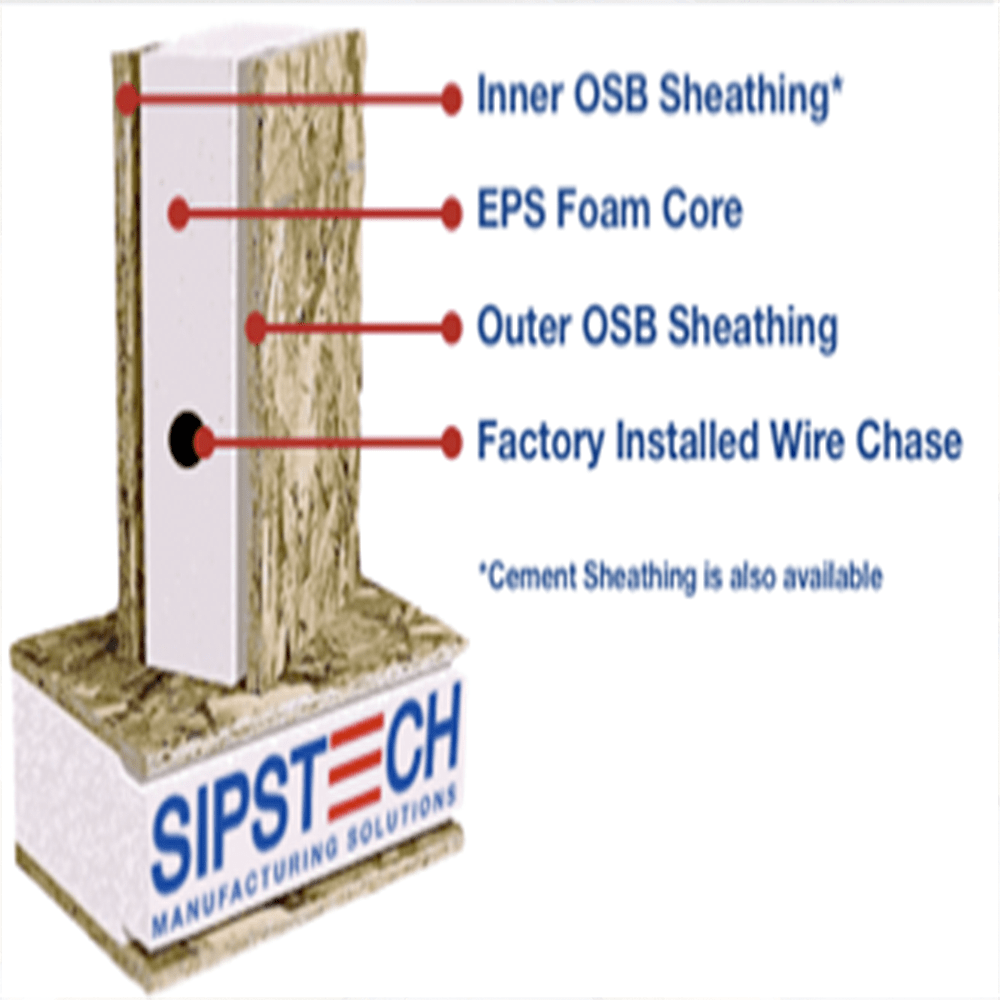You can build just about anything with Structural Insulated Panels!

What are SIPs?
SIPs are high-performance building panels for floors, walls and roofs in residential and commercial buildings. Each panel is typically made using expanded polystyrene (EPS), rigid foam insulation sandwiched between two structural skins of oriented strand board (OSB and other skins can be utilised depending on the application), and other surfaces are also available to meet your needs. The result is a building system that is very strong, predictable, energy efficient, and cost effective.
What R-values do SIPs have?
The R-value of a SIP varies depending on the thickness and type of foam core used. According to a study by Oak Ridge National Laboratory, the “whole-wall” R-value of a wall with a 3-1/2″ EPS core is 14 compared to 9.8 for a 2 inch x 4 inch wood framed wall insulated with R-11 fiberglass insulation. When the performance of the whole wall system is considered, SIPs perform better than traditional systems because they are manufactured in a controlled environment characterised by uniform fabrication of components without gaps or air pockets. They are also designed for efficient field installation that reduces air infiltration, and there are few thermal breaks or penetrations in the panels that are typical of wood frame construction.
How do SIPs compare in costs?
Building with SIPs generally costs about the same as building with wood frame construction, when you factor in the labour savings resulting from shorter construction time and less job-site waste. Other savings are realised because less expensive heating and cooling systems are required with SIP construction.
Why do SIP homes outperform home built with other methods?
SIP buildings are vastly more energy efficient, stronger, quieter, and more draft free than other building systems, such as stud framing with fiberglass insulation. Fiberglass is sometimes used for furnace filters because air moves through so freely. Rigid insulation is used as solid component insulation in almost every industry for its inherent efficiency and lack of air movement. These attributes are built right into a SIP building. Less air leakage means fewer drafts, less noise, lower energy bills, and a much more comfortable indoor environment.
How much more energy efficient are SIPs?
You can slash energy costs by up to 50%. Because SIPs create a tighter building envelope than conventional insulation, your builder can actually reduce the size of heating and cooling equipment. That reduces costs immediately. Better yet, SIPs keep your costs down from season to season, year after year, for as long as you own your home.
How are electrical and plumbing installed?
In commercial construction, wiring is pulled through a conduit. “Chases” or channels are built into the foam cores of a SIP panel that work like conduit. Electricians use a fish tape and feed the wires through panel chases without compressing insulation or drilling through studs. Typically, plumbing is installed in interior walls and floors, but not in exterior walls. Where exterior wall vent pipes are necessary, chases can be formed in the foam cores. Installing island vents or loop vents is also a common practice and can be found in plumbing codes.
Why are SIPs more environmentally responsible?
When you build with SIPs, you’re building homes that can save 50% or more on energy costs when compared to conventional stick frame construction. That means less fossil fuel consumption and less greenhouse gas emissions. SIP technology provides higher “whole-wall” R-value, tightens the building envelope, and reduces air infiltration. That allows you to downsize the heating and cooling equipment. It1s the combination of these systems that makes up the technology of a high-performance SIP home. You will also enjoy the green building benefits of less job-site waste, better utilisation of material resources, and more environmentally friendly building practices.
Why are SIPs so much stronger?
SIPs structural characteristics are similar to a steel I-beam. The skins act like the flanges of an I-beam, and the rigid core provides the web of the I-beam configuration. This composite assembly yields stiffness, strength, and predictable performance. Not only do test results show panels are stronger, but natural disasters have proven it time and again. Home s built with SIPs withstood the Great Hanshin (Kobe, Japan) and North Ridge earthquakes, as well as Hurricane Andrew.
How do SIPs react to fire?
Fire requires three components: fuel, ignition, and oxygen. SIPs have no “air” within their solid cores of insulation. The fire cannot “run up the wall” cavity even when balloon framed. SIPs have passed every standard fire test required of wood based or type V construction. A key element of fire safety is protection of the SIPs and any other underlying structure with 15-minute thermal barriers, such as gypsum wallboard
How about ventilation?
All advanced technology building systems require mechanical ventilation. These systems bring fresh air into the building and exhaust moisture laden and stale air to the outside. Often, they can be combined with filter systems or other fresh air devices. Not only is ventilation practical, but it’s a code requirement in many areas. Many heat recovery ventilators (HRVs) are available from your mechanical contractor.
How do SIPs save so much labour?
Cutting and fabricating, based on your construction drawings, are done for you in a SIP manufacturing plant. That reduces site labour and time building materials are exposed to the weather on the job site. SIPs are also made in large sizes up to 8 ft by 24 ft so assembly on-site is faster, framing crews are more productive, and the project is “dried-in” sooner. That means other subcontractors can get a head start on the jobs they need to do.
What is the structural performance of SIPs?
SIPA manufacturers make their panels to meet code requirements and are listed with the National Evaluation Service, Inc. (NES) or the International Conference of Building Officials (ICBO). These reports have load design charts showing allowable loads for given sizes of structural insulated panels.





